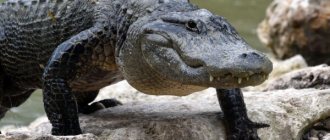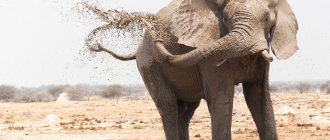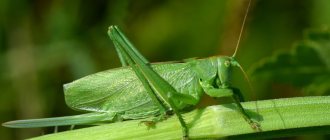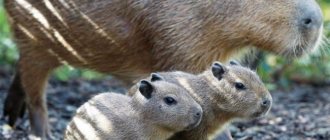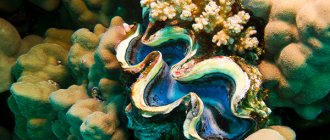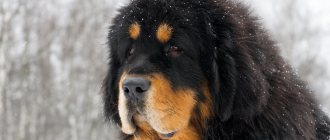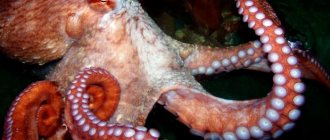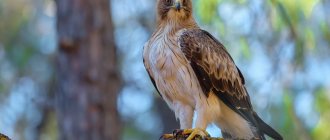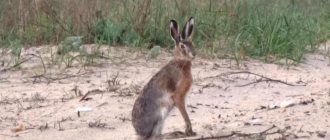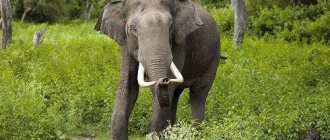The largest living reptiles today are crocodiles and their relatives - gharials, alligators, caimans. In the past, these creatures were significantly more massive due to larger animals that served as food for the predatory reptiles. Our contemporaries have slightly “shrinked” and no longer reach prehistoric sizes, although they still remain impressive and dangerous. About where the largest crocodile on Earth lives and how much it weighs, as well as about its largest relatives that can compete with it for places in the top - in the material of 24SMI.
How are crocodiles measured?
Reptiles come in large sizes, but still often “suffer” from exaggeration of their own merits on the part of people. The creatures, which prefer not to emerge from the water most of the time, are difficult to assess visually, so the stories about them are not reliable. The largest individuals live in the coastal waters of Australia - these are saltwater (combed) crocodiles. Almost all champions belong to them.
Measuring the length of the skull is the most commonly used method for assessing crocodyliforms. Scientists take the midline of the muzzle from the tip of the nose to the back wall of the skull and measure with a tape measure, since a clear proportional relationship between the lengths of the skull and the body has been proven. But the giant still needs to be caught, which is extremely difficult.
Reproduction
The mating season for alligators begins in the spring, at which time males and females growl, thereby attracting attention. In the lower part of the jaw, alligators have a special musk gland, which emits a characteristic odor, which also attracts partners. One male can create a colony of 10 females. Alligators make their nests near the water, collecting leaves, grass and twigs in a pile. The nest is a hill about a meter high.
A baby alligator hatching from an egg.
Chinese alligators lay 10 to 40 eggs, while American alligators lay 20 to 50 eggs. Alligators cover their eggs with grass on top. The incubation period lasts 65 days, females do not leave the nest during this entire time, protecting it from predators. When the babies hatch, they squeak, their mother, hearing this squeak, digs up the grass, and then takes the cubs in her mouth and carries them into the water. Small alligators have yellow stripes on their bodies that form a protective coloring. The female alligator takes care of the young for several months, and when the cubs grow up, she begins to behave aggressively with them, thereby forcing the cubs to live independently.
Gomek (5.42 m)
Gomek is a saltwater crocodile caught by George Craig in Papua New Guinea. In 1985, the reptile was sold to the family of Terry and Arthur Jones in Florida. And then the owners resold the pet to the St. Augustine Alligator Farm Zoological Park.
View this post on Instagram
A post shared by Victor Ray (@v1cr4v)
Gomek amazed visitors with his amazing tolerance towards people and his ability to toss food before swallowing it. It was considered almost tame. On March 6, 1997, the “good-natured slave” died from natural aging and developing heart problems. Alas, reptiles get sick too. His height at the time of death was 5.42 m, and his weight was 860 kg. Gomek is believed to be between 60 and 80 years old.
Nutrition
An alligator is a predatory reptile. American alligators are large in size, placing them at the top of the food chain among other predators. American alligators even hunt wild boars and deer, but this happens extremely rarely. The main diet is turtles, platypuses, fish, nutria, raccoons, muskrats and waterfowl. Alligators also affect livestock, as well as cats and dogs. Alligators do not disdain lizards and snakes. Baby alligators hunt invertebrates and insects.
Alligator with prey.
Chinese alligators are small in size, so they are not as dangerous as American alligators. They hunt mainly birds, fish, snakes, insects and invertebrates. Reptiles are typically nocturnal and rest in their burrows during the day.
Cassius (5.48 m)
The Australian saltwater crocodile Cassius has been declared the largest crocodile ever kept in captivity. This fact was recognized by the Guinness Book of Records in 2011.
The record holder was caught in 1987 on the Finis River in Australia. He is now about 110 years old. By human standards, Cassius is considered disabled. It lacks a front leg and the tip of its tail, but this does not prevent the reptile from feeling wonderful. The length of the record holder is 5.48 m.
View this post on Instagram
A post shared by Victor Ray (@v1cr4v)
By the way, Cassius was caught by George Craig, who also caught Gomek. In Australia it is called "Crocodile Dundee", after the hero of the highest-grossing adventure film of 1986.
Alligators are ancient animals
Fossil of an ancient crocodile. markchentx/Getty Images
Alligators, like other crocodiles, have undergone very few evolutionary changes since the time of the dinosaurs. Mississippi alligators appeared about 84 million years ago, and their ancestors more than 200 million years ago. The only older reptiles are turtles. In fact, alligators are more closely related to dinosaurs than to other modern reptiles ().
Lolong (6.17 m)
This is the largest crocodile reliably measured. Measurements were taken in the enclosure in November 2011.
Lolong was considered the main suspect in the attacks. The deaths of a fisherman and a 12-year-old girl were attributed to him. But no human remains were found in the contents of his stomach. There were only water buffalos - the main prey of the predator. The largest crocodile in the world weighed 1075 kg.
View this post on Instagram
A post shared by Victor Ray (@v1cr4v)
Named in honor of Ernesto Goloran Cañete, a veteran of crocodile hunting and part-time leader of the hunt in which Lolong was caught. They hunted the giant for 3 weeks with hundreds of hunters. Ernesto Cañete managed to celebrate his victory, but the last hunt had a significant impact on the man’s health. The crocodile catcher died a couple of days after the success from a heart attack.
And the crocodile himself lived for 18 months, until February 10, 2013. Doctors diagnosed him with a whole bunch of diseases: fungal pneumonia, kidney failure, obesity. According to the mayor of Bunawan, where Lolong lived, this was not a result of poor living conditions. More likely an accident associated with hypothermia and weather conditions.
Population and species status
Chinese alligators are now considered a very rare species, since there are no more than two hundred of them left in the wild. To save this species from extinction, as well as to restore its numbers, adult individuals are currently caught and placed in specially created protected areas.
Alligators do well in captivity, so they reproduce without problems, which creates good chances for the preservation of the species. Due to this fact, in our time, many farms have been created where alligator breeding is practiced. The largest farms are those created in Florida and Louisiana, Thailand, Australia, and China. Similar enterprises have appeared in other countries.
Prehistoric giants
There are a number of candidates for the title of the longest crocodile-like giant to ever exist. But it’s worth considering that scientists can discover the remains of a larger, new extinct reptile at any time. In addition, not all skeletons were found in complete form. As a rule, we are talking only about parts of the skull and teeth. Therefore, the dimensions are estimated approximately.
The largest prehistoric crocodiles in the entire history of the planet:
- eutacodone;
- Deinosuchus;
- rhamfosukh;
- murasuchus;
- Sarcosuchus;
- Purussaurus
Euthecodon brumpti is an ancient crocodile that lived in Kenya and preferred to eat fish. The largest skeleton found belongs to a specimen 10 m long. And the owner of the bones discovered by archaeologists lived on Earth 4 million years ago.
Deinosuchus is an alligator that lived at the end of the Cretaceous period 73 million years ago. Modern alligators are much smaller than Deinosuchus, whose size reached 10.6 m. It hunted everything that swam or ran in the coastal zone.
Rhamphosuchus was considered the largest extinct crocodile in history. Lived in India. At first, paleontologists decided that the length of Rhamphosuchus was 15-18 m, and they gave him the winner’s crown. But recent studies have shown that it did not exceed 11 meters in length.
Mourasuchus is a crocodile from South America that lived in the Miocene. The impressive size (12 m) did not make the reptile dangerous. The structure of Murasuchus's skull suggests that it fed by filtering water. The reptile's slender jaws are not designed for capturing large prey.
Sarcosuchus and Purussaurus had similar body sizes. Both reached a length of 11-12.5 meters. They lived in Africa and South America. But paleontologists consider Sarcosuchus to be a larger prehistoric giant.
Black caiman
Length: 3.9 m, weight: 350 kg
Cayman is the oldest inhabitant of our amazing planet, whose appearance remains virtually unchanged. Underwater in the Amazon basin lives a strong and large animal, whose weight reaches an average of 350 kg.
Black caimans have enemies only in childhood - young animals face many dangers, like everyone else living in the cruel waters of the Amazon.
The cubs have to learn a lot, because without camouflage the crocodile immediately becomes prey for piranhas, jaguars, etc. Adult black caimans sit for a long time in a pond without the slightest movement - thus, they wait for prey. More than 70 teeth, sharp as a blade, pierce any animal that bends towards the water.
Champions included in the Book of Records
The largest, according to the Guinness Book of Records, is the already mentioned saltwater crocodile Cassius, whose length is 5.48 m. Saltwater crocodiles grow slowly and by the age of 100 can theoretically reach 7 meters. Cassius lives at the Australian wildlife zoo Marineland Melanesia. About fifty more individuals live there with him.
Until February 10, 2013, Lolong was considered the largest crocodiles caught, which was also discussed above. The list of giants is not limited to the above list. In nature, larger reptiles can be found.
Thus, the inhabitant of the Fly River in Papua New Guinea is considered to be the most documented and studied. It doesn't have a name. The giant's carcass was caught in fishing nets in 1983. It took the efforts of 50 people to pull this handsome man ashore. According to eyewitnesses, a whole deer carcass was found in the reptile’s stomach.
The crocodile's skin was removed and salted along with the skull. The size of the preserved material is 6.2 m. And although this is not a complete specimen, it is considered the largest documented saltwater crocodile.
The media mentioned that the Guinness Book of Records accepted an application for a crocodile from Bhitarkanika Park (India) named Kalia. The stated size is 7.01 m and weight is 2 tons. But this is not an established fact, since the record holder still needs to be caught and the dimensions rechecked, and the message about her does not even include a photo.
According to another newspaper legend, in July 1958, a giant crocodile, Krys, was shot and killed in Queensland, Australia. The declared size is 8.64 meters. No evidence was found to support these indicators. Therefore, the reptile is not included in any official lists. Although there is a life-size monument to Chris at the site of his capture.
In 2022, zoologist Adam Britton measured the head and came to the conclusion that the statue could not depict a life-size reptile due to the discrepancy between the proportions of the head and body. The skull of the monument is 152 cm. At the same time, the largest recorded skull is only 76 cm. Because of this, the body formed by the sculptor is much smaller than what a crocodile with such a head should have. Also, the weight of the giant is stated as 2 tons. But a reptile with a head of 152 cm would weigh 2 times more.
Another legend is the cannibal Gustave. This is an impressively sized male Nile crocodile from Burundi, rumored to have killed 300 people on the shores of Lake Tanganyika and the Ruzizi River. The rumors date back to the 1990s and coincide with the popularity of Crocodile Dundee.
Behavior
Adults are solitary. Each alligator lives in a separate territory. If another alligator appears, then the owner of his territory is aggressive. Young animals live in groups and coexist with each other quite peacefully. At first glance, alligators seem clumsy, but when hunting they can move at a speed of 45 kilometers per hour.
The alligator can be a very fast sprinter.
In the fall, alligators hibernate; they spend the winter in burrows located on the shore of a reservoir. A large hole can accommodate several reptiles at once. Some alligators do not dig holes, but simply bury themselves in the mud, leaving only their nostrils on the surface. Even in severe frosts, the alligator feels safe in the mud, since the necessary amount of oxygen reaches its lungs.
The largest reptile in Russia
The largest crocodile in Russia is a female Nile crocodile who lives in Yekaterinburg. Nile crocodiles are the second largest freshwater crocodiles after the saltwater crocodiles. Males are capable of reaching 5.5 meters. But, as a rule, they do not exceed 3.5 m in length. Females are 30% smaller. Their length reaches 4 meters, and their weight is 400+ kg.
It is reported about the resident of Yekaterinburg that she managed to work in a zoo and in a restaurant. But when the reptile grew and gained weight, it was transferred to a nursery. Umka eats beef, pork and other types of meat products.
To summarize, it is worth saying that the largest crocodile living on the planet, if we are talking about species, is the Australian saltwater crocodile. This is the largest coastal predator, which is dangerous to encounter in the wild. Zoologists believe that the size and prevalence of the Australian reptile is influenced by natural aggressiveness. Therefore, they suggest admiring giants only in films and photographs.
Gangetic gharial
Length: 4.5 m, weight: 250 kg
The Gangetic gharial from all other types of crocodiles . First of all, the differences relate to appearance. From ancient reptiles, the crocodile has preserved a narrow muzzle, the jaws of which are studded with sharp, needle-like teeth.
The Gangetic gharial spends most of its life in the water, where it catches its prey for food - fish, and in its habits it is more reminiscent of a predator fish. The gharial is an excellent swimmer, its speed in the water reaches up to 30 km/h.
The animal comes to land only to receive a portion of the sun's rays and to reproduce. The reptile's color is coffee green; on average, a crocodile weighs about 250 kg.
Maternal instinct
Males become sexually mature at 16 years of age, females much earlier, at 12 years of age. Saltwater crocodiles breed exclusively in autumn and winter. The female lays about 50 eggs in the hole and buries it. Inside such a nest, the young are kept along with dirt and leaves, which maintain a comfortable temperature in the hole. After three months, the crocodiles are born. The female, usually, is not far from the cubs and closely monitors their development; as soon as the mother hears the voices of the babies, she begins to tear open the hole and help the offspring hatch. However, females are sometimes not very vigilant and the eggs become prey to predatory animals. One way or another, only one percent of the offspring usually survives to sexual maturity, because young individuals are also eaten by other predators.
The sex of an alligator is determined by temperature
Casanowe/Getty Images
That's right - if the temperature in the nest of baby alligators is warm, male alligators are born; if the temperature is cool, then the cubs are females. The mother alligator lays her eggs on a mound of earth. When the eggs are ready to hatch, baby alligators use the "egg tooth" on their snout to break the eggshell ().
Geography
The habitat of American alligators is the southeastern states of the United States (Texas, North and South Carolina, Georgia, etc.). The largest populations are observed in Florida (accounting for about 80% of all individuals) and Louisiana.
Photo – orangeblazepodcast; pike alligator
Alligators live in fresh water. Salty foods are poorly tolerated due to underdeveloped glands for removing excess salt from the body.
They prefer standing water, which is why there are so many of them in wetlands. If a body of water dries out and becomes shallow, reptiles migrate to another. They often wander into swimming pools at private homes or country clubs.
Males prefer more open bodies of water, while females feel more comfortable in a swamp. Animals dig holes that save them from heat and frost.
Unlike other species, pike alligators are well adapted to the cold, as a result of which their habitat extends to the north of the southeastern states.
birds_and_snakes
Alligators wait out bad weather in an original way. They freeze completely into the ice, leaving only their nostrils on the surface.
During this period, they go into suspended animation until the water melts and do not respond to external stimuli.
Alligators can eat their babies
Troy Harrison/Getty Images
Researchers noted that a large number of baby alligators appear to die before reaching maturity and investigated the cause. They found that baby alligator mortality is partly due to the fact that about 7% of them are eaten by their parents ().
Social structure
Alligators have the most developed connections among crocodiles. Young individuals prefer to stay together, which helps them successfully defend themselves from attacks by predators.
romanne_c
Mature animals do not need close ties with their relatives, but periodically create large groups.
Males do not have pronounced territorial behavior; there are practically no violent fights, even during the mating season.
During drought, predators are forced to form large groups. During this period, reptiles ignore each other.
Interesting Facts
- The Mississippi alligator is the official animal of Florida and the mascot of the local university.
- Predators use their powerful tails to build nests.
- Over the course of a lifetime, an alligator grows up to three thousand teeth.
- This amazing reptile does not like prey that resists and often abandons it.
American alligators are amazing animals, unique and strong.
Their relationship with humans went through difficult periods: hunting, extermination, but recently the situation has changed.
The alligator population is not in danger, as people appreciate their significant role for the entire ecosystem.
Relationships with people
Alligators are not afraid of people. They can be dangerous to humans, mistaking them for prey or responding to aggression. The greatest threat is to children and pets.
gatortrainerpete
Particularly dangerous are reptiles that have been fed by people, which is absolutely forbidden to do. After all, then the alligator will associate the person with food.
If you find a predator on your property, you need to call a special animal control service and not take any action yourself to catch it.
As habitat shrinks, reptile attacks become more frequent.
